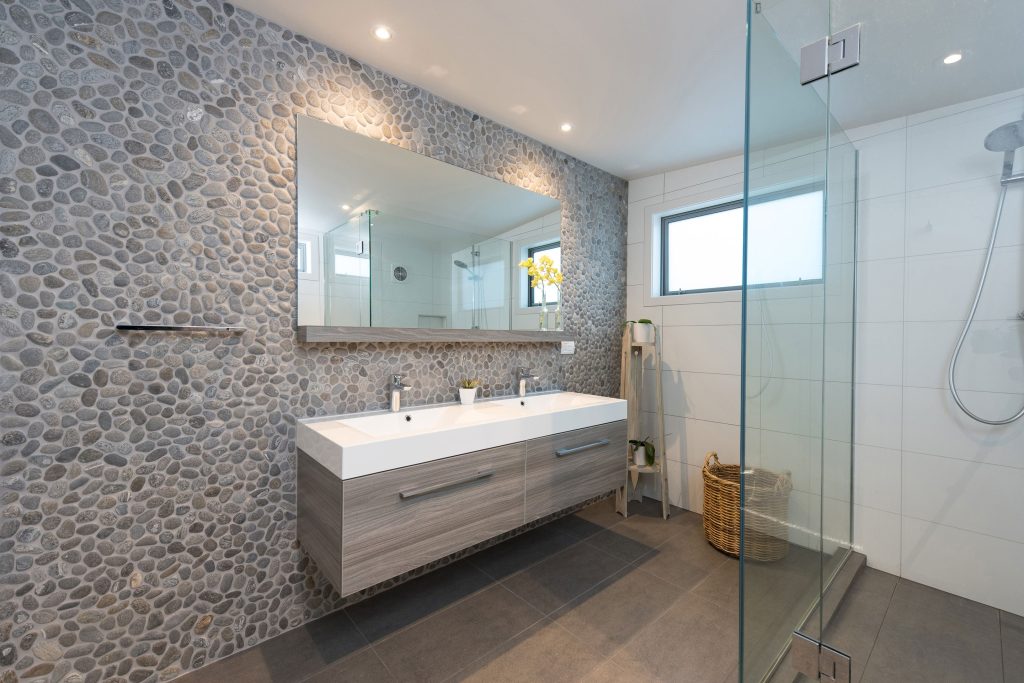
Natural stone flooring brings unparalleled elegance and sophistication to any home. But with so many options available—from classic marble to modern slate—choosing the right type can feel overwhelming. This thorough guide will walk you through the process, helping you select the perfect natural stone flooring to match your style and budget. We’ll explore various types of natural stone, installation considerations, maintenance tips, and much more, ensuring you make an informed decision. By the end, you’ll be confident in your ability to select and install stunning natural stone flooring that enhances your home’s beauty for years to come.
Understanding varied Types of Natural Stone Flooring
Choosing the right natural stone for your flooring requires understanding the diverse options available. Each stone type boasts unique characteristics, affecting its durability, maintenance, and aesthetic appeal. Let’s explore some popular choices:
Marble
Marble, known for its luxurious veining and timeless elegance, is a classic choice for high-end homes. Its smooth surface and cool tones create a sophisticated ambiance. However, marble is relatively soft and requires careful maintenance to prevent staining and scratching. Consider sealing it regularly to protect its beauty.
Granite
Granite offers exceptional durability and resistance to scratches and stains. Its wide scope of colors and patterns offers versatility in design. Granite’s inherent strength makes it a practical choice for high-traffic areas. However, its density can boost the cost of installation and potentially require specialized tools.
Related Post : The Best Flooring Choices for Open-Concept Spaces
Limestone
Limestone, a sedimentary rock, exudes a rustic charm with its unique textures and subtle colors. Its porous nature requires regular sealing to protect against moisture damage. Limestone’s softer texture adds a touch of elegance to rooms without the high-maintenance needs of other options like marble.
Travertine
Travertine, a type of limestone, is known for its distinctive holes and warm tones. Its porous nature necessitates sealing. Travertine offers a balance between durability and elegance, ideal for creating a unique aesthetic. Its subtle beauty makes it suitable for various interior design styles.
Slate
Slate, a metamorphic rock, is prized for its durability and water resistance. Its rich colors and textured surface add visual interest. While it is less prone to staining than marble or limestone, regular cleaning is essential. Slate’s unique texture makes it a great choice for both modern and traditional homes. The darker shades are especially resistant to scratches.
Factors to Consider When selecting Natural Stone Flooring
Beyond the aesthetic appeal, several crucial factors influence your natural stone flooring choice. Carefully considering these facets will help ensure a achievementful and satisfying outcome.
Budget
Natural stone flooring varies significantly in price depending on the type, quality, and origin. Marble and granite generally fall on the higher end of the spectrum, while limestone and slate can offer more budget-friendly alternatives. study and compare prices from varied suppliers before committing to a purchase. Factor in not only the cost of the stone itself but also the installation and maintenance expenses.
Lifestyle and Traffic
Consider your lifestyle and the level of foot traffic in the area where you plan to install the flooring. For high-traffic areas, such as hallways or kitchens, durable options like granite or slate are ideal. If you have young children or pets, consider stone with a higher resistance to scratches and stains.
Maintenance
varied natural stones require varying levels of maintenance. Porous stones like limestone and travertine need regular sealing to protect against water damage and staining. Marble and granite are generally easier to maintain but still require periodic cleaning and polishing to preserve their shine.
Design Style
The style of your home greatly influences the choice of natural stone. Modern homes often favor the clean lines and sleek appearance of polished granite or slate. Traditional homes may benefit from the elegance of marble or the rustic charm of travertine. Consider the overall aesthetic you’re trying to achieve before making your selection. Consider consulting with an interior designer to understand how varied stone types would enhance the overall look of your space.
Installation Process
Installation of natural stone flooring is a specialized process that often requires professional assistance. Consider the complexities of installation; the process may vary based on the chosen stone’s properties and characteristics.
Choosing the Right Finish for Your Natural Stone Flooring
The finish of your natural stone flooring significantly impacts its appearance and durability. varied finishes offer unique benefits and drawbacks. Let’s explore some common options:
Polished
Polished finishes create a sleek, reflective surface that enhances the stone’s color and pattern. This option adds elegance but can be more susceptible to scratches and stains. The high sheen requires regular cleaning to maintain its luster.
Honed
Honed finishes offer a low-sheen, matte appearance. They are less prone to showing scratches and stains than polished finishes, and their low-maintenance quality makes them ideal for busy households. They retain their beauty with less maintenance than polished finishes.
Flamed
Flamed finishes create a textured surface with a rougher appearance. This technique enhances the stone’s natural character, making each tile unique. However, the uneven surface can trap dirt and require more frequent cleaning. Flamed finishes offer a unique aesthetic, especially suited to outdoor spaces.
Brushed
Brushed finishes create a slightly textured surface with a matte finish. This option offers a good balance between durability and aesthetic appeal. Brushed finishes are typically more resistant to slips than highly polished stones, thus becoming suitable for areas like bathrooms.
Installation and Maintenance of Natural Stone Flooring
Proper installation and maintenance are vital for ensuring the longevity and beauty of your natural stone flooring. Let’s delve into these crucial facets:
Professional Installation
While some DIY enthusiasts might attempt to install natural stone flooring themselves, it’s generally recommended to hire a professional installer. Professionals have the expertise and tools to ensure proper installation, minimizing the risk of damage and ensuring a long-lasting outcome. Improper installation can lead to cracking, uneven surfaces, and other issues that are difficult and costly to rectify.
Regular Cleaning
Regular cleaning is essential to maintain the beauty and integrity of your natural stone flooring. Regular sweeping or vacuuming removes loose dirt and debris. Periodic mopping with a pH-neutral cleaner will remove more embedded stains and dirt. Avoid using harsh chemicals or abrasive cleaners, which can damage the stone’s surface.
Sealing
Sealing is especially crucial for porous stones like limestone and travertine. Sealing creates a protective barrier that prevents water and stains from penetrating the stone. Regular resealing, typically every one to two years, helps maintain the stone’s integrity and beauty. Always follow the manufacturer’s instructions when selecting and applying a sealant. For highly-porous stones like travertine, a higher quality sealant is typically recommended.
Repair and Restoration
Despite careful maintenance, damage can occur. Minor scratches or chips can often be repaired with specialized stone repair kits. For more significant damage, it’s optimal to consult a professional stone restoration specialist. They possess the expertise and tools to restore the stone to its original beauty. Prevention is key, however; a regular maintenance plan will help extend the life of your flooring.
Choosing the Right Natural Stone Flooring for Your Specific Room
varied rooms in your house have unique requirements for flooring. The appropriate stone type should be matched to the room’s use and traffic level.
Bathrooms
Bathrooms often require flooring with good water resistance and slip resistance. Slate and polished granite are excellent choices, offering durability and an elegant look. However, carefully consider the risk of falls; honed or brushed finishes offer more slip resistance than polished surfaces. select a sealant designed for wet areas.
Kitchens
Kitchens are high-traffic areas, frequently exposed to spills and stains. Durable options like granite or quartz are ideal, offering stain and scratch resistance. Consider darker shades to mask dirt and spills. Polished granite offers an elegant look but may require more maintenance.
Living Rooms
Living rooms typically require aesthetically pleasing flooring that is relatively easy to maintain. Marble, limestone, or travertine can create a luxurious ambiance, but consider the level of traffic and the need for regular maintenance. Honed finishes offer a more practical solution for high-traffic living spaces.
Bedrooms
Bedrooms often prioritize comfort and aesthetics. Limestone, travertine, or even softer stones like marble can offer a calming ambiance. However, consider traffic levels and potential spills, choosing a finish and material that balances aesthetics and practicality.
Choosing natural stone flooring for your home is a significant investment, but the elegance and durability it offers are unparalleled. Remember to consider factors like your lifestyle, budget, and desired aesthetic when selecting the perfect stone. By carefully weighing your options and following the guidance offerd, you can confidently create a stunning and timeless space. Don’t hesitate to consult with professionals for expert advice and installation. Elevate your home’s beauty with natural stone flooring!
